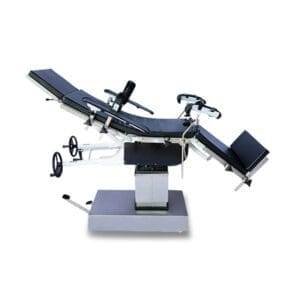Address
304 North Cardinal St.
Dorchester Center, MA 02124
Work Hours
Monday to Friday: 7AM - 7PM
Weekend: 10AM - 5PM
Address
304 North Cardinal St.
Dorchester Center, MA 02124
Work Hours
Monday to Friday: 7AM - 7PM
Weekend: 10AM - 5PM
Operating tables (OT tables) are the heart of any surgical suite, providing the foundation for successful medical procedures. When it comes to choosing the right OT table for a healthcare facility, one of the primary decisions is between manual and motorized models. Both types have their advantages and disadvantages, and the choice can significantly impact patient outcomes, surgical efficiency, and budget considerations. In this comprehensive guide, we will dive deep into the comparison of manual and motorized OT tables to help you make an informed decision about which is better suited for your specific needs.
-300x300.jpg) Manual OT tables are the traditional workhorses of the operating room. They rely on human power for adjustments and positioning. Here are some key features of manual OT tables:
Manual OT tables are the traditional workhorses of the operating room. They rely on human power for adjustments and positioning. Here are some key features of manual OT tables:
Motorized OT tables, on the other hand, incorporate advanced technology for seamless adjustments. Let’s delve into their advantages:
Let’s compare these two types of OT tables in various aspects to determine which might be better for your healthcare facility:
Manual OT Tables:
Motorized OT Tables:
 Manual OT Tables:
Manual OT Tables:
Motorized OT Tables:
Manual OT Tables:
Motorized OT Tables:
Manual OT Tables:
Motorized OT Tables:
Orthopedic surgeries often require precise positioning and adjustments. Motorized OT tables are typically preferred for these procedures due to their advanced control and flexibility.
To address power failure concerns, many motorized OT tables have backup battery systems that can sustain critical functions during outages. It’s essential to check the specific features of the table you choose.
In some cases, manual OT tables can be retrofitted with electronic components to enhance their adjustability. However, these modifications should be performed by qualified technicians and comply with safety regulations.
Choosing between manual and motorized OT tables depends on your healthcare facility’s specific needs, budget constraints, and surgical specialties. While manual tables offer reliability and cost-effectiveness, motorized tables provide precision and efficiency. Ultimately, the decision should align with the types of surgeries performed, the surgeon’s preferences, and the facility’s long-term goals. A thoughtful assessment of the advantages and disadvantages outlined in this guide will help you determine which type of OT table is better suited to meet your healthcare facility’s requirements.